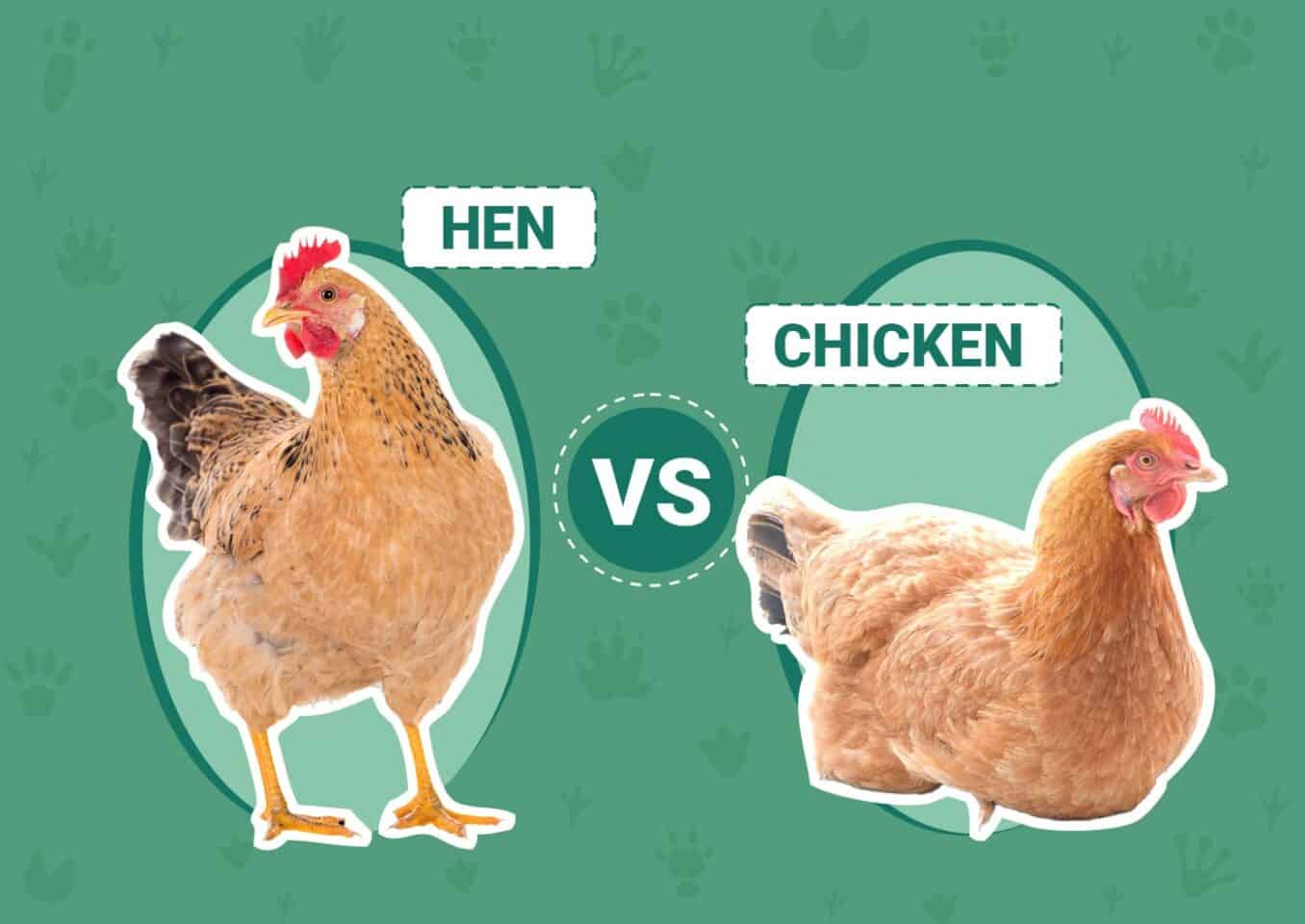A chicken is a type of fowl that is commonly bred for its meat and eggs. A hen is just a mature female chicken over a year old and is one of several names given to chickens according to gender, age, and maturity.
Younger female chickens are known as pullets, while young males are called cockerels, adult males are referred to as roosters or cocks, and a male chicken that has been castrated is known as a capon.
Although some breeds are auto-sexing, which means that the chicks have visual differences straight from hatching, in most cases you will have to wait until they are between 6 and 8 weeks of age to be able to sex your chickens. Feather-sexing (looking at the length of different feathers to determine sex) does not work on most pure breed chicks but can work on some hybrids.

Visual Differences
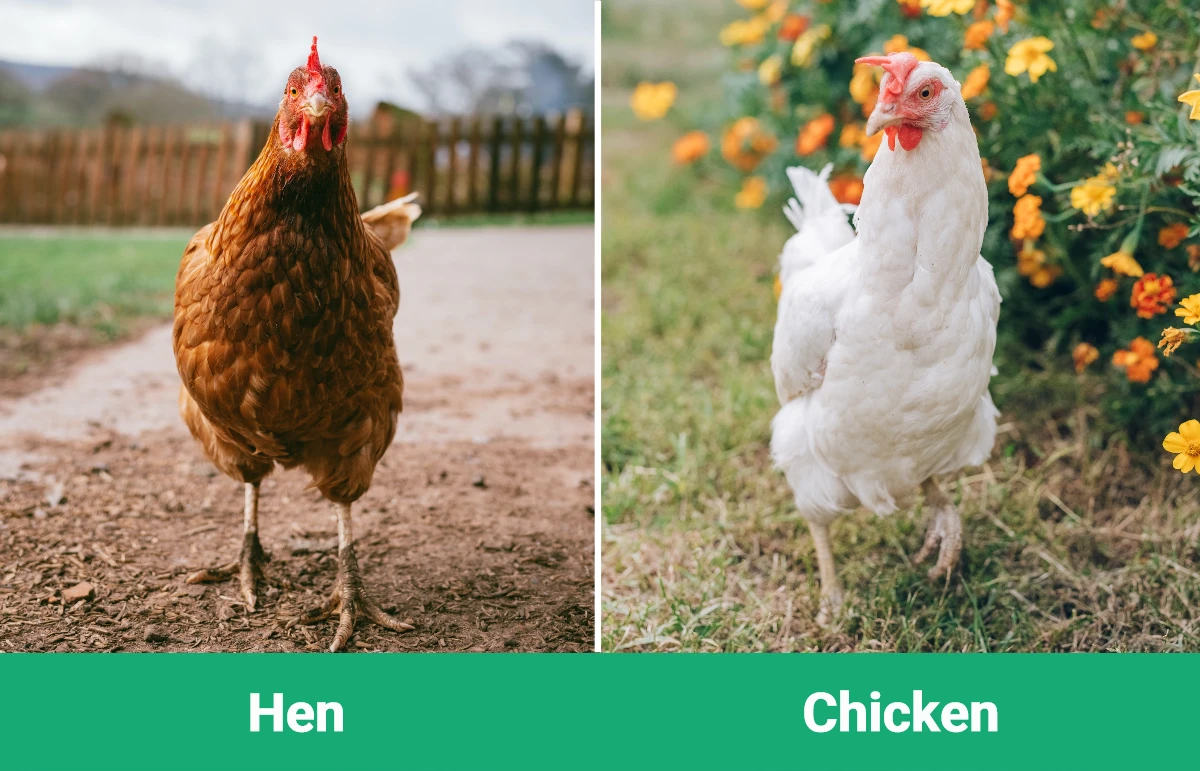
At a Glance
- Average height (adult): 20–30 inches
- Average weight (adult): 4–10 pounds
- Lifespan: 5–10 years
- Care requirements: Moderate
- Family-friendly: Some breeds
- Other pet-friendly: Some breeds
- Trainability: Food driven
- Average height (adult): 20–30 inches
- Average weight (adult): 4–10 pounds
- Lifespan: 5–10 years
- Grooming needs: Moderate
- Family-friendly: Some breeds
- Other pet-friendly: Some breeds
- Trainability: Food driven

Hen Overview
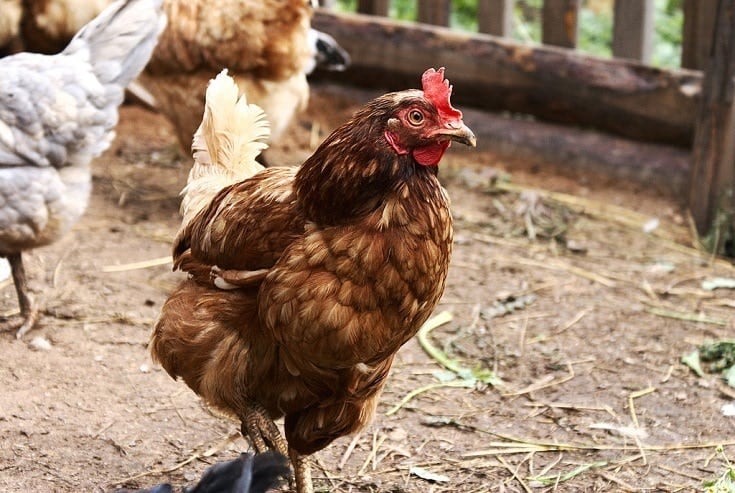
A hen is a female chicken. It can be any breed but it must be female and once they have laid their first egg. Once a hen lays her first eggs, she will attract roosters and will lay through the first year, until her first molt occurs. Once her first molt starts, the hen will not lay again until her feathers have grown back in. Once this completes, she will continue to lay until old age. There are hundreds of breeds of hen, each with its own distinct characteristics and physical traits.
Personality / Character
The mother hen is known for being a protective mother, often bordering on overprotectiveness, hence the term “mother hen” but they leave chicks to figure some things out for themselves and gain independence. They won’t force the chicks out of the eggs if the shell becomes stuck. They can become aggressive when protecting their chicks and can be especially aggressive towards another hen’s chicks.
Age
There is debate over exactly what defines a hen. There is no dispute that it is a mature female chicken, but there are various schools of thought over when they reach maturity. Some say that a young chicken becomes a hen when she lays her first egg. Others simplify this by saying that a chicken reaches maturity at 12 months. Yet others use the breastbone, and when the breastbone becomes hard, the female is considered a hen.
Laying Hens
A laying hen is one that is kept primarily to lay eggs. Depending on the breed, a hen can lay as many as 300 eggs a year and colors can range from the brown and beige that we see most often on store shelves, to pastel blue and white. At the other end of the spectrum, some breeds lay very, very dark chocolate-colored eggs. Size can also vary and is not necessarily dependent on the age of the mother hen.
How to Encourage Laying
To encourage laying, you should ensure that you provide the best possible conditions for your hen. They need to be physically and mentally happy. Reduce stressors, ensure that they have a secure and comfortable nesting box, and provide a separate roosting area. Feed carefully, remove eggs from the box to prevent a fear of overcrowding the nest, and consider adding a false egg to show new mother hens where they should lay.
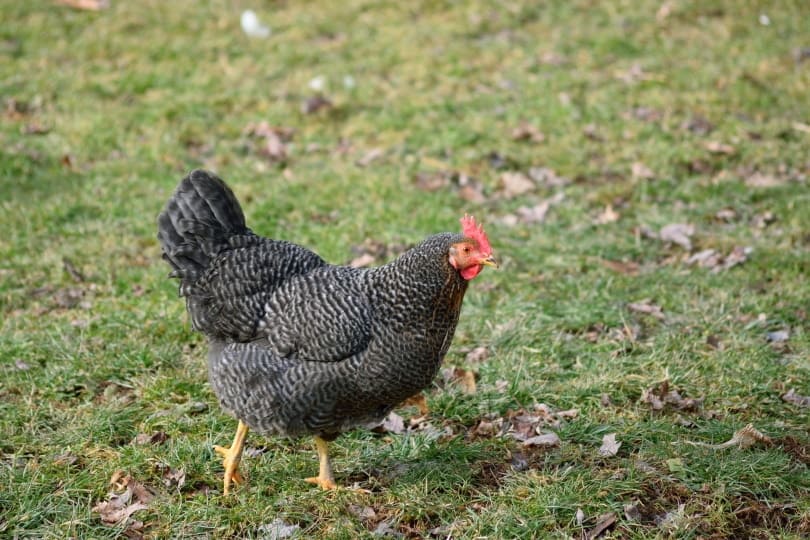
Broody Hens
A broody hen is one whose maternal instincts have kicked in. She believes it is time to lay and sit on an egg until it hatches, and she will attempt to do this, oftentimes at the expense of all else. A broody hen that doesn’t lay an egg can become ill and your broody hen could become defensive, showing signs of aggression towards the other hens.
Some breeds are more prone to broodiness than others, but you can break up broodiness in a hen. Act as soon as is reasonable because it is easier to break broodiness during the early stages. Broody breaker pens sit off the floor and are slightly uncomfortable for the broody hen, encouraging her that it is not time to lay or incubate eggs.
Suitable for:
Anybody looking to breed chickens. Hens can lay eggs for eating or for incubating and rearing chicks. There are hundreds of different breeds to choose from, including prolific layers and those that lay unusually patterned and colored eggs.

Chicken Overview
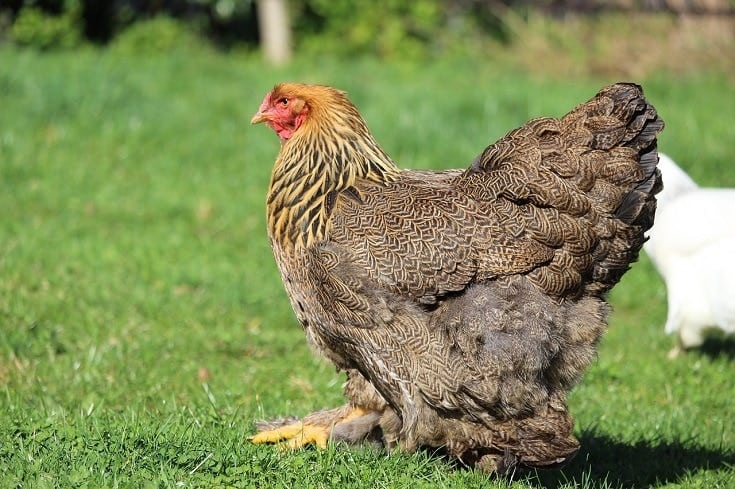
The hen is a mature, female chicken. The chicken is a type of largely domesticated fowl, bred for its meat and its eggs, and also kept as a pet. As well as hens, you will also find pullets, which are female but have not yet laid their first egg. Cockerels are young males, while roosters are mature males. Neutered males are called capons.
Personality / Character
Chickens are commonly bred for their meat, as well as their eggs. They are relatively small, can live in quite confined spaces, and although they do require daily attention, they are easy to care for compared to a lot of livestock. What’s more, the range of breeds and hybrids means that there are breeds that offer the greatest egg production, those that are bred for the best tasting meat, and there are those that are reared because they are friendly and make great pets. Some chickens can be hand-fed, get along with other animals as well as young children, and are great yard pets that are inquisitive, bright, and friendly.
Training
Training a chicken is similar, in principle, to training any animal. Encourage them to do something that you want them to repeat, and then give them a treat when they do it. If you do this often enough, the chicken will instinctively perform that action in expectation of receiving a treat. You can gradually wean them off the treats and they should continue to perform the action, although you may need to give the occasional reward to reinforce the pattern.
A treat is considered anything that would not normally be given as food, and it might include morsels like mealworms, sunflower seeds, and some berries.
Health & Care
Caring for chickens is easier than caring for a lot of livestock, but it does still require a regular commitment. You need the space, will have to commit the time, and you need to research your breed for specific care requirements.
They need a coop or pen, and this may need to be warmed or heated during cold months. If you do suffer very cold winters, ensure that you choose a chicken breed that is hardy to this kind of climate.
You will also need to feed your chickens. Ideally, you will feed organic food to ensure that it is free from chemicals and pesticides, and ensure that it is suitable for the age or life stage of the chicken that you’re feeding.
Breeding
Breeding chickens means that your flock can expand naturally. To some, this will be obvious, but a hen can always lay eggs. However, without a rooster, they cannot be fertilized and will never lead to chicks. You must have a rooster to fertilize a hen’s eggs. Aim for a ratio of approximately one rooster to every eight hens, practice selective breeding to enjoy the positive traits of the breeds you choose and be prepared to keep your rooster with his hens until they successfully lay chicks.
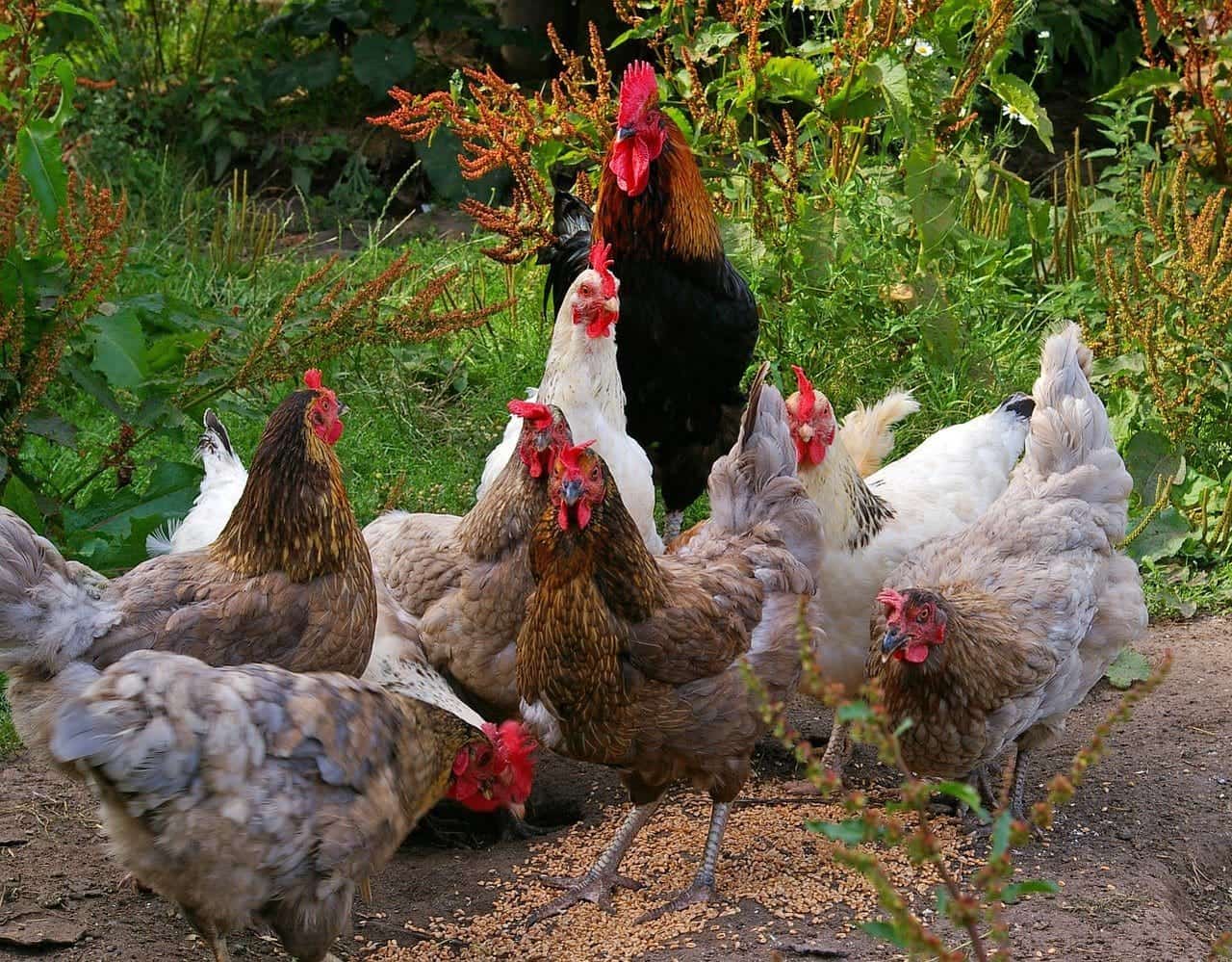
Suitable for:
Chickens are suitable for smallholding owners, farmers, and for homeowners that want to keep them out in the yard. Chickens can be friendly and even loving, sweet animals, and depending on the breed you opt for, they can be reared for their high-quality meat, for their eggs, or their friendly nature.

Which Breed Is Right for You?
A hen is a female chicken that is mature enough to lay eggs, while a chicken can be a hen, a rooster, cockerel, or any other combination of age and gender. If you want eggs for the table, you need one or more hens and do not need a rooster. If you want to breed chickens, to increase your flock size, or because you want to advance a particular chicken breed, you will need hens and at least one rooster.
Roosters are known for having an early morning, loud call, so unless you really want to enhance the size of your flock and you have distant or very understanding neighbors, you will only really want to keep hens. With hundreds of different breeds, you can find chickens that offer the best tasting meat and those that produce a high volume of unusual looking eggs. Some chickens, considered dual-purpose, have great tasting meat and yield a good number of eggs every year.
Related Chicken Reads:
- 10 Chicken Breeds with Feathered Feet (with Pictures)
- 18 Friendliest Chicken Breeds
- 10 Black and White Chicken Breeds (With Pictures)
Featured Image Credit: Top – 9883074, Pixabay | Bottom – Shannon VanDenHeuvel, Unsplash
